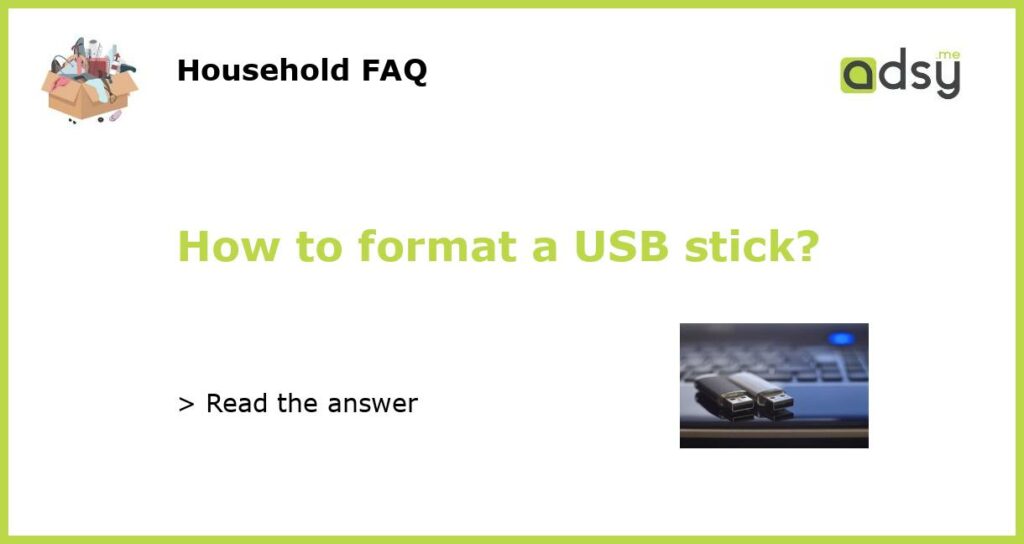Formatting a USB Stick: A Step-by-Step Guide
Formatting a USB stick can be a straightforward process, but it’s important to follow the right steps to avoid any issues or data loss. In this guide, we’ll walk you through the process of formatting a USB stick on both Windows and Mac operating systems. Whether you need to get rid of a virus, optimize storage space, or fix formatting errors, this guide has got you covered.
Step 1: Connect the USB Stick to your Computer
The first step is to connect the USB stick to your computer. Insert the USB stick into an available USB port on your computer or laptop. Ensure that the connection is secure and there are no loose connections. Once connected, your computer should recognize the USB stick and assign it a drive letter.
Step 2: Back Up Important Data
Before formatting a USB stick, it’s crucial to back up any important data that you may have stored on it. Formatting erases all data on the USB stick, so it’s essential to transfer any files you want to keep onto your computer or another storage device. This will prevent any data loss during the formatting process.
Step 3: Format the USB Stick on Windows
Formatting a USB stick on Windows is a relatively simple process. Follow these steps:
- Open File Explorer by pressing the Windows key + E on your keyboard.
- In File Explorer, locate the USB stick. It will be displayed under the “This PC” or “Computer” section.
- Right-click on the USB stick and select “Format” from the context menu.
- A format window will appear. Choose the file system you want to use (such as FAT32 or NTFS) and give the USB stick a name.
- Click on the “Start” button to begin the formatting process. A warning message might appear, informing you that all data on the USB stick will be erased. Ensure that you have backed up your data before proceeding.
- Once the formatting is complete, you will see a message confirming the successful format.
Step 4: Format the USB Stick on Mac
Formatting a USB stick on a Mac is also a straightforward process. Here’s how you can do it:
- Open Finder on your Mac by clicking on the Finder icon in the dock.
- In the Finder window, locate the USB stick. It will be listed in the “Devices” section of the sidebar.
- Click on the USB stick to select it.
- Go to the “File” menu at the top of the screen and select “Erase” from the dropdown menu.
- In the erase window, choose the file system you want to use (such as MS-DOS (FAT) or macOS Extended (Journaled)) and give the USB stick a name.
- Click on the “Erase” button to begin the formatting process. A warning message might appear, informing you that all data on the USB stick will be erased. Ensure that you have backed up your data before proceeding.
- Once the formatting is complete, you will see a confirmation message.
Step 5: Safely Eject the USB Stick
After formatting the USB stick, it’s important to properly eject it from your computer to avoid any data corruption. Follow these steps:
- On Windows, locate the “Safely Remove Hardware” icon in the system tray, usually located at the bottom right corner of the screen. Right-click on the icon and select the USB stick from the list. Wait for the notification that it is safe to remove the USB stick, then disconnect it from the USB port.
- On Mac, click on the “Finder” icon in the dock to open Finder. In the sidebar, locate the USB stick and click on the Eject button (which looks like an upward-pointing arrow). Wait for the notification that it is safe to remove the USB stick, then disconnect it from the USB port.
With these steps, you can easily format a USB stick on both Windows and Mac operating systems. Remember to back up your data before formatting to avoid any loss. Whether you need to clear viruses, optimize storage, or fix formatting errors, formatting your USB stick can help you achieve a clean and functional device.






